B.M.C PureDAC - £1,290
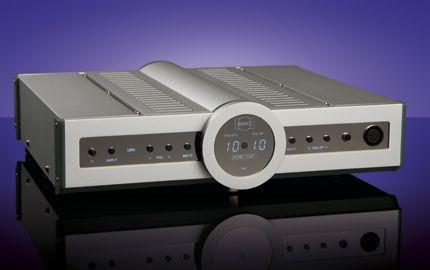
There’s more to life than hi-fi you know, and indeed many consumers are beginning to think the less of it you have, the better. This is heretical stuff to those who grew up during the seventies and eighties, when we were taught that if it didn’t come in umpteen separate boxes, it simply couldn’t be any good. Now, though, suddenly there are all sorts of possibilities presenting themselves. The most obvious example of this is the DAC/preamp. It’s a sort of Sports Utility Vehicle of the hi-fi world, promising to do lots of important things very well, without you needing to own the component parts.
This is what I had thought B.M.C.’s new PureDAC to be, but the company claims it is more than this, and uses a host of proprietary technologies to make an unusually sophisticated marriage between the two. Indeed, its maker calls it a ‘digital/analogue power converter’ no less – something that integrates all analogue functions into an extremely short signal path while performing each single function better than the traditional way. “Virtually lossless” digital conversion is achieved by the company’s proprietary Current Injection circuitry, and there’s passive sample noise filtering and a special Discrete Intelligent Gain Management system.
As far as the end user is concerned, it still presents itself as a multi-source DAC and headphone amp with a (digital) preamplifier thrown in. The showroom appeal is further heightened by the low price and swish build quality. The backlit acronym on its fascia stands for Balanced Music Concept.
It’s a pretty striking-looking thing, and the wide expanse of metalwork comes from high-quality aluminium extrusions that have been specially anodised to give a luxurious, silky feel. The ornate styling confers additional status on the product, but B.M.C. says the central curative also functions as a well for reducing resonance in the casing. Power it up and the mirror section of the front panel lights up like a Honda Civic dashboard. Bright white LED light issues from behind, labelling all the control buttons for you and displaying the digital source selected and the sampling rate used. The worst part is the slightly fiddly buttons, which aren’t the easiest to use.
It’s very tidy inside too, with a decently sized toroidal transformer rigidly bolted onto the lower case extrusion. Digital audio, logic, analogue audio and headphone driver stages all have their own separate power feeds, and inside the sections there is further electronic separation for important functional groups like master-clock, DAC and USB. Special balanced current capacitors are used for their low-impedance characteristics, and are said to have an absolutely symmetrical charge and discharge pattern. Low inductance automotive fuses and film bypasses are featured everywhere in the circuitry. Next to the transformer sits the control PCB, which interfaces with the front panel displays and switching, and behind is the main board, much of which is taken up by power supply componentry.
The balanced preamplifier section is said to be properly integrated with the DAC’s current-to-voltage converter, which converts and filters the DAC’s current, eliminating the need for an extra stage. The DAC fitted is an ESS Sabre 9016, used because it covers all standards including DSD64, DSD128 and up to 32-bit, 384kHz PCM via the USB input. The S/PDIF inputs are limited to 24/96. An important part of the package is the headphone amplifier, which is claimed to deliver high currents (the balanced output is said to be close to 0ohms!). B.M.C. cites “headphones with strong motors, like Beyer Dynamics Tesla series or Fostex’s TH900” as benefitting especially. Speaking of plugging things in, round the back you get AES/EBU, Toslink, coaxial and USB digital inputs, while a pair of balanced XLR and unbalanced RCAs send the music out. There are also special link sockets for connecting with other members of its family.
Sound quality
I have no experience of any past designs, but the PureDAC doesn’t take long to tell me it has been very well thought through. I start listening using it purely as a DAC, into an integrated amplifier, just to gauge its mettle, and am more than a little surprised to hear it cope with one of my favourite torture tracks – REM’s Life And How to Live It – without breaking into a sweat. Frankly this CD is hard work even via a really good CD player; the vinyl version is a lot more listenable. But the PureDAC isn’t fazed, and delivers an even, open and enjoyable rendition.
That’s going some for any 16/44 converter, so horrible is this digital disc; Joe Boyd’s puritanical production (think the opposite of Duran Duran’s lavish soundscapes) full of ringing Rickenbackers isn’t easy to get right. But the song bounces along; tonal balance is even and the piercing guitar work doesn’t grate as much as feared.
Meanwhile, singer Michael Stipe grumbles through the track in his folksy way, the PureDAC conveying those gravely vocals clearly and cleanly. Rhythmically, things romp along, and I get a fine sense of the micro dynamics of the song, the subtle accenting that make it so much more involving. All of which tells me that the PureDAC is a clean, open and even-sounding device, and one that’s particularly strong on low-level detail.
Switching to full-blown preamplifier duties, I am even more encouraged. Driving either good solid-state or tube amplification, it doesn’t let itself down when substituted for the superb MF Audio Passive preamplifier. Fed digits by an Esoteric CD transport, it makes light work of Randy Crawford’s You Might Need Somebody. A warm and breezy but powerful Tommy LiPuma production, the PureDAC really gets into the swing of things. Vocals have an admirable purity of tone, but are still carried with emotion and passion. Backing brass stabs and electric guitars again have excellent texture, coming over as real, believable instruments with realistic timbre. At the same time, things move along well in rhythmic terms, the song getting a sense of its own trajectory, moving ever closer to a resolution. Overall this little box comes over as a detailed and neutral performer; it doesn’t have a distinctive, larger-than-life character and nor does it try to impose one on the music. Basically it just gets out of the way, letting the listener get to the musical heart of the matter.
Moving across digital sources, and the USB input is no less handy. Via a MacBook Pro running Audirvana, Herbie Hancock’s Rock It comes over just as smoothly as any silver disc, but with significantly more detail, depth and dynamics – just as it should. This powerful track with swinging dynamics, pioneered the use of electronics in dance music. The PureDAC shows its alacrity at capturing the leading edges of snare drums, letting the music come over at great speed. The result is a powerful, propulsive sound with plenty of space between the beats; instead of blurring and slurring things as lesser DACs do, it reveals itself to be pin sharp. The dynamic crescendos on this track are pretty marked, and these are tracked very faithfully by the PureDAC, making for a real seat-of-the-pants listening experience. At the same time, it peppers the soundstage with low-level detail, providing an enthralling yet intricate performance.
In absolute terms, and against high-end reference products, the PureDAC shows a slight narrowing of the soundstage. Also, it is tonally quite ‘matter of fact’, and some will prefer a slightly warmer and silkier presentation. Still, you’d never call the PureDAC in any way harsh or cold sounding – it isn’t, it just lacks the lustrous warmth and body that you’d get from a dCS Debussy, costing five times the price, for example. This isn’t a criticism as such, it’s merely a factual observation, and unless the PureDAC goes up against truly expensive hardware, most listeners will feel charmed by its excellent all-round ability.
Certainly, in terms of its price point, the amount of detail, delicacy and finesse you get is really rather unexpected. Cue up Beethoven’s Pastoral Symphony, for example, and this lovely spacious, beguiling piece of music comes over in a wonderfully believable and enjoyable way. Across the formats and the genres, this is a fine performer.
Conclusion
One of the ancient hi-fi laws laid down way back in the mists of time – probably somewhere around the seventies – is that sound quality stands in inverse proportion to style or functionality. Well, products like this confound such notions – here’s
a lovingly built, stylishly presented device with a wide range of inputs and facilities, it costs surprisingly little for what it has got, and sounds superb. Indeed, any suspicions that you might be harbouring that the PureDAC is ‘all show and no go’ will be quickly dispelled when you plug one in and give it a listen. Its evenness of tone and general across-the-board competence is such that it should appeal to lovers of many types of music, running a wide variety of systems, too. Who says that you can’t always get what you want?
LIKE: Open, powerful, detailed sound; features; styling; build|
DISLIKE: Control buttons a little fiddly
WE SAY: Excellent sounding, versatile DAC/preamp that’s fantastic value for money
DETAILS
PRODUCT B.M.C. PureDAC
ORIGIN Germany/China
TYPE Digital-to-analogue converter/preamp
WEIGHTt 5.4kg
DIMENSIONS (WxHxD) 365 x 103 x 328mm
FEATURES
• 16 to 24-bit, 44.1kHz to 192kHz PCM; DSD playback
• ESS Sabre 9016 DAC chip
• Headphone amplifier with independent level control
• Fully balanced operation
• High-quality toroidal transformer
DISTRIBUTOR Colab Audio Ltd
TELEPHONE 07702 168000
WEBSITE colabaudio.com
 |
Inside this month's issue: Arcam Radia A25 integrated amp, iFi Audio iDSD Diablo 2 DAC/headphone amp, Eversolo DMP-A8 streamer/DAC/preamp, Line Magnetic LM-845IA valve amp, Record Store Day Spring Drop, standmount loudspeaker Group Test and much, much more
|

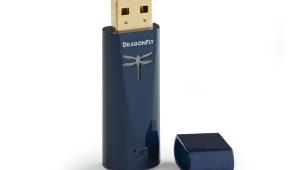
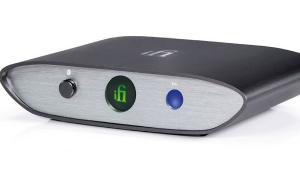

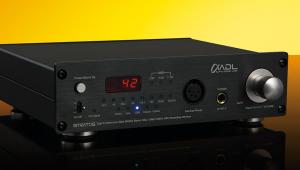



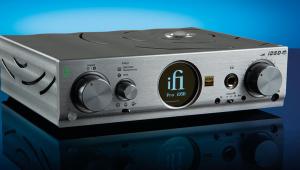


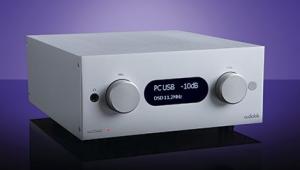
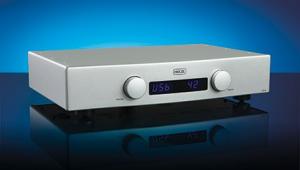
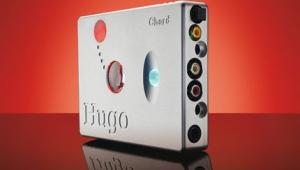

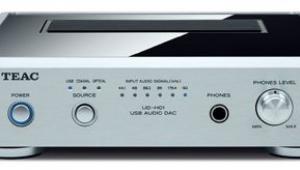
































.jpg)



